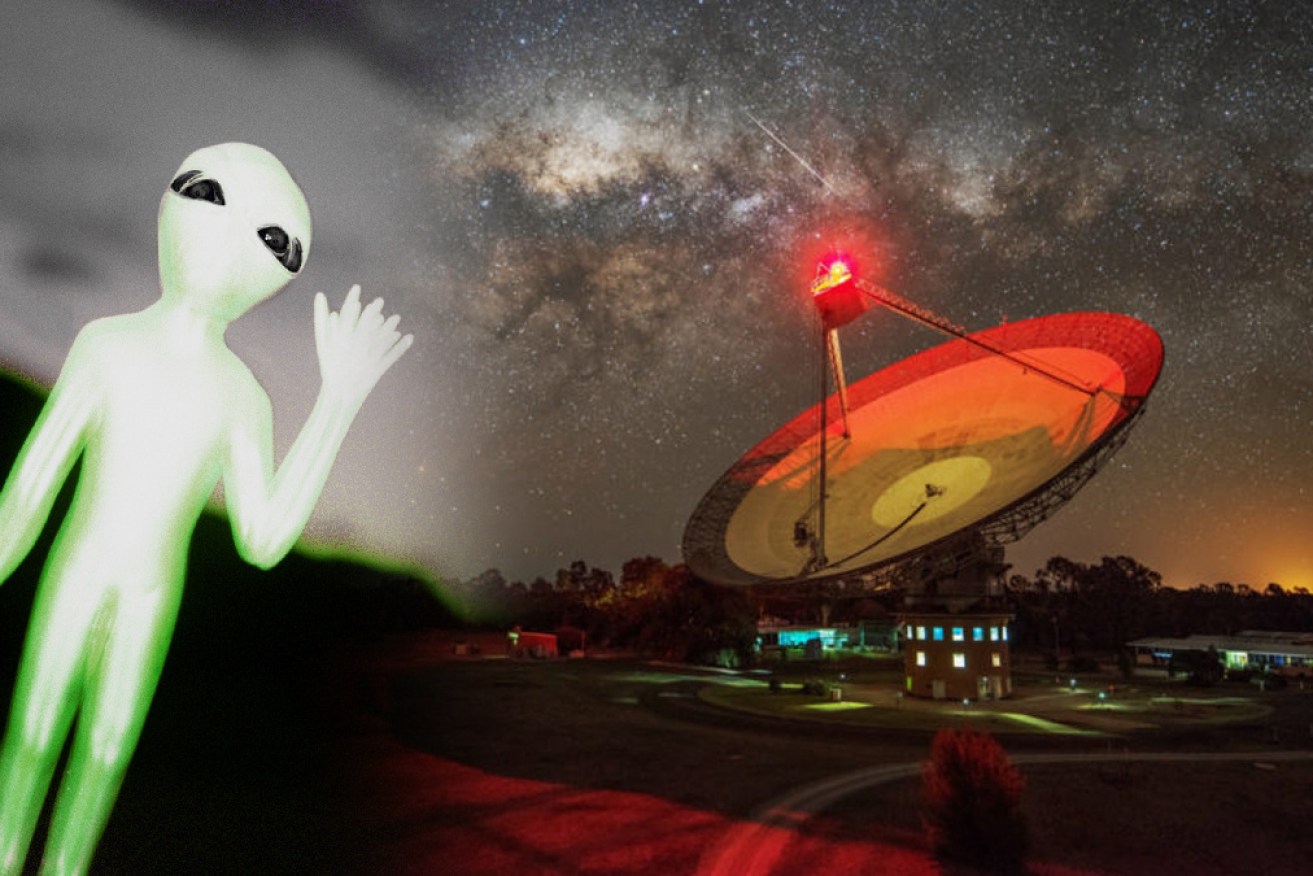Australian alien hunters on alert after 36 ‘possible’ civilisations found


Australia's Parkes telescope is part of the largest ever investigation into extraterrestrial life. Photo: TND
Our galaxy could be home to up to 36 other active and intelligent living civilisations, scientists have calculated.
In more scandalous terms: There could be 36 alien communities in the Milky Way.
The finding was published in The Astrophysical Journal this week, and while it’s not concrete evidence that aliens exist, it is positive news, Swinburne radio astronomer Danny Price said.
This week’s study came out of the University of Nottingham.
The team established the Astrobiological Copernican Principle, which – through equations and data – plots habitable zones in the galaxy.
That sweet spot has to be just the right distance from a star, not too hot or cold (just right) and where water can possibly be found on a planet’s surface.
“It is called the Astrobiological Copernican Principle because it makes the assumption that our existence is not special,” study co-author Christopher Conselice told CNN.
- Related story: Australian telescope finds home of fast radio burst
“That is, if the conditions in which intelligent life on Earth also developed somewhere else in the galaxy then intelligent life would develop there in a similar way.”
Dr Price heads up the Breakthrough Listen project at Australia’s Parkes telescope, the search for intelligent life in outer space.
He told The New Daily that while the study was far from solid proof of aliens’ existence, it does show us the extent to which the requisites for life exist outside our planet.
“It doesn’t necessarily mean there’s an alien world in the galaxy, it’s just that based on the numbers they’ve put into their calculations (the possibility is 36),” Dr Price said.
“The calculation is a number that’s not zero, like some other studies have found. So that’s kind of good news from that point of view.”
E.T. phone Australia
Dr Price’s work is part of the largest ever research program into extraterrestrial life.
Through our famous Parkes telescope, Dr Price is helping to listen for messages from inside the Milky Way, as well as the 100 of our closest neighbouring galaxies.

The CSIRO’s Parkes radio telescope at Parkes Observatory played an important communications role for the Apollo 11 lunar landing in 1969. Photo: AAP
“Twenty five per cent of the time with the telescope is contracted to Breakthrough,” Dr Price explained.
“We’re using it to do a survey of the nearest stars to us. That’s about 1000 of the nearest stars that’s within 100 light years.
“And then also doing a survey of the Galactic plane, which is about 17,000 light years.”
It’s a trade-off as to which exploration zone will yield better results: Further away means more stars, therefore more opportunities.
Closer stars mean it’s easier to detect signals. Stars that are further away mean the detection loses sensitivity, Dr Price explained.
“So at Parkes we’re using nearby stars, and about 70 from the Galactic plane.”
Back in the ’90s
The Parkes telescope has been used to hunt for aliens before.
In 1995 it was part of Project Phoenix, scanning 170-odd stars for patterns in radio signals. It was funded by the SETI Institute in California, US.
By 2004 the results of 800 stars, scanned from telescopes across the world, were finally analysed.
They found nothing, prompting Project Phoenix head Peter Backus to declare: “We live in a very quiet neighbourhood.”
When it’s not scanning for alien messages, the Parkes telescope scans for pulses and fast radio bursts, alongside a new radio telescope in Western Australia.









